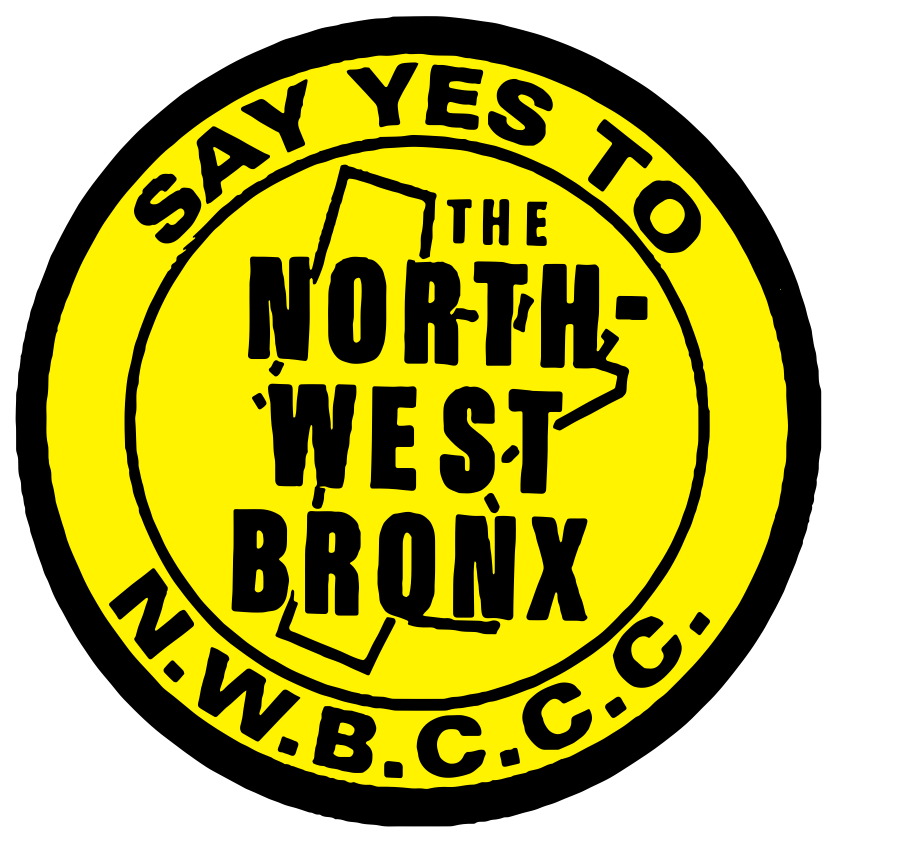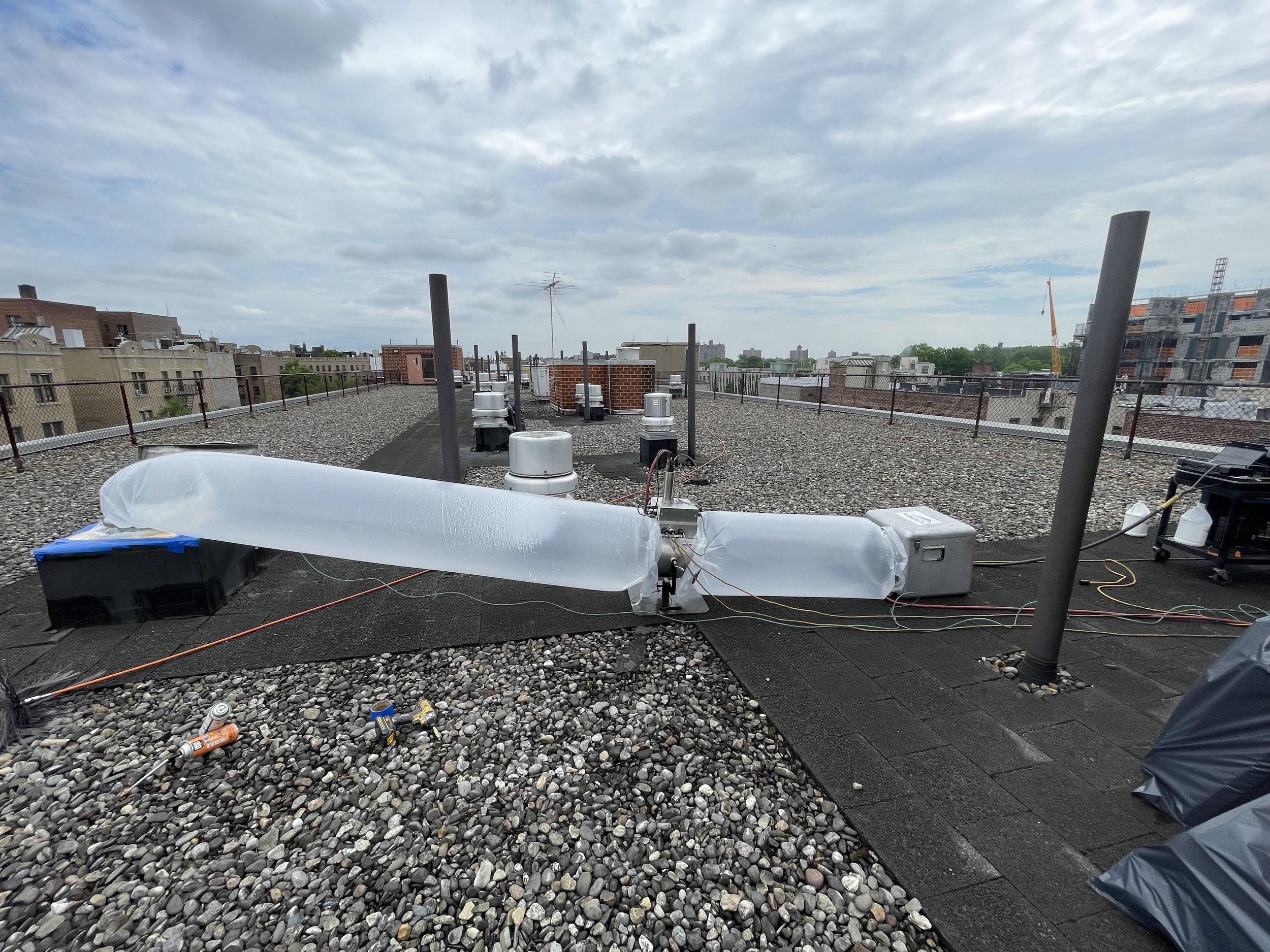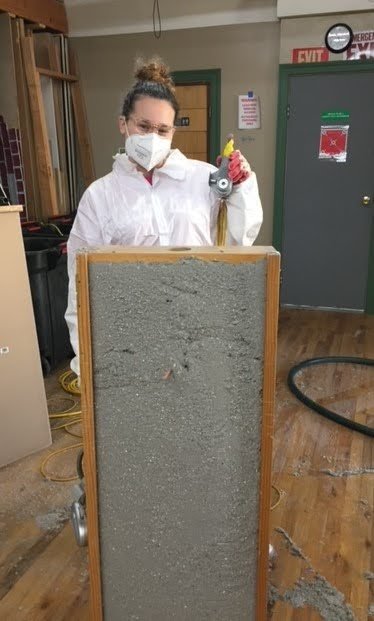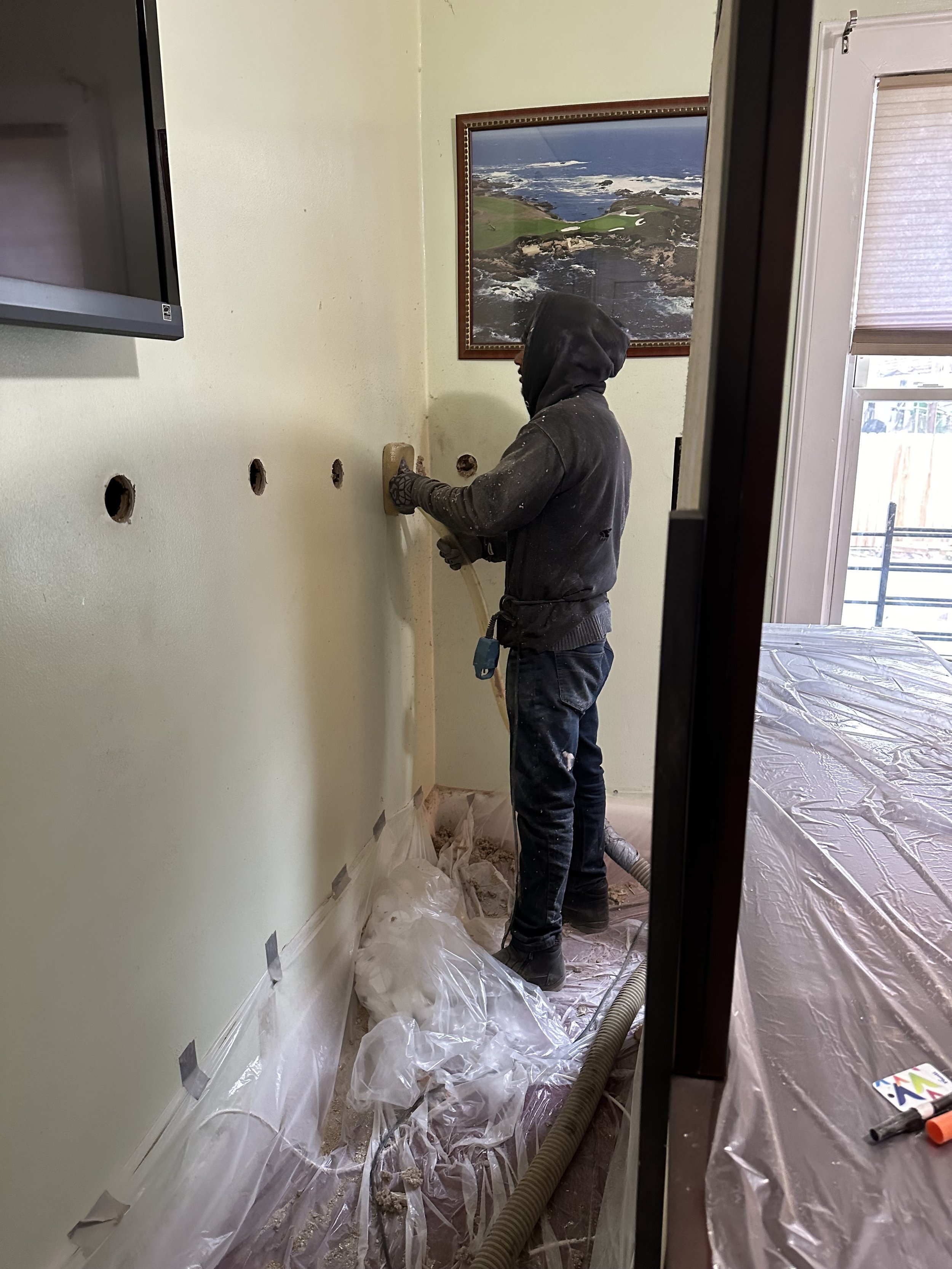For over 40 years, our Weatherization Assistance Program (WAP) has reduced energy and utility costs by installing energy efficiency measures in low-income households—especially those occupied by the elderly, persons with disabilities, and families with children.
In 2023, NWBCCC WAP celebrated its 40th Anniversary, having weatherized over 15,000 units in the Northwest Bronx since 1983!
Other accomplishments from 2023 include:
NWBCCC’s WAP doubled in size with investment from the BiPartisan Infrastructure Law (BIL) that expanded critical investment in climate resiliency retrofits in low-income tenant buildings.
We implemented a variety of energy-efficiency and health and safety retrofits in 304 units in the Bronx. Over two-thirds of these units are occupied by senior citizens.
We completed an American Rescue Plan (ARPA) Demonstration Project in two buildings, where in addition to traditional weatherization upgrades, we installed a heat conversion to electric pumps, eliminating fossil fuels.
Our WAP program has served the Bronx since 1983.
NWBCCC WAP was born from an organizing campaign we waged in the early 80s when tenants and homeowners were struggling from fuel shortages and the rising cost of gasoline for cars and oil for home heating due to soaring interest rates and the country’s dependence on foreign oil. NWBCCC began protesting the practice of building owners passing the increased cost of heating their buildings on to the tenants.
In 1982, NWBCCC President Anne Devenney led a surprise visit to Exxon headquarters, in which hundreds of people swarmed the lobby, urging a $12 million investment in a weatherization fund for the Bronx and similar communities nationwide. Lawmakers soon recognized the value of WAP as an instrument for promoting energy conservation and helping low-income families manage their energy bills. In 1983, NWBCCC received its first WAP contract.
Frequently Asked Questions about Weatherization:
How does weatherization benefit the Bronx?
-
The Department of Energy’s priority for WAP is achieving net-zero carbon emissions economy-wide by 2050, addressing historical energy and environmental injustices, and expanding the clean energy workforce. By reducing energy consumption, WAP reduces carbon emissions from buildings and electricity production and eases strain on the grid as we transition to cleaner electricity sources. WAP work scopes lessen or eliminate fossil fuel use through: (1) Tuning, cleaning and repairing relatively new/operable fossil fuel burning appliances. This increases efficiency, saving money for the client and reducing carbon emissions. (2) Electrification projects that convert appliances to ones that run on electricity, eliminating fossil fuels when feasible, as the country continues to “green the grid. (3) Increasing solar projects through WAP, NYSERDA or other funding sources.
-
WAP lessens the impact of higher energy costs on low-income families and improves the health and safety of assisted households. As a grant, not a loan, WAP helps keep housing affordable for both homeowners and tenants. No rent increase is allowed for WAP improvements. Reduced energy and maintenance costs due to WAP improvements free up a building’s operating budget for other repairs. Apartments are more comfortable and healthier to live in. WAP work can address violations, such as lack of heating and hot water, leaks, and defective doors or windows. Building owners can apply for a NYC J-51 tax abatement based on WAP work, freeing up additional capital for their maintenance budget.
-
The in-house instrumented WAP audit assesses health and safety issues in the home and ensures improvements. WAP enhances Indoor Air Quality through the reduction of carbon monoxide, gas leaks, and volatile organic compounds. It remediates lead, radon, asbestos, refrigerants, and mercury. WAP eliminates leaks or other conditions that lead to excess moisture and mold. It also removes pests, unsanitary conditions, and flammable compounds. WAP installs working smoke and CO detectors and fire extinguishers where mandated. WAP conducts steady-state efficiency tests of fossil combustion equipment, such as boilers and hot water makers. WAP ensures proper ventilation and air exchanges per hour as well as proper venting of chimney gasses from combustion appliances. Additionally, it resolves other obvious code or safety issues observed during the audit.
-
The WAP program creates quality jobs, promotes job retention, and stimulates the local economy. WAP builds the local economy through training and employing Bronx residents as professional energy auditors. Ninety percent of NWBCCC WAP staff are born and raised in the Bronx or are current Bronx residents! Local contractors are encouraged to participate, as are minority or women-owned business enterprises and veterans’ enterprises. Local vendors are used to purchase supplies, materials, and services. Federal Weatherization dollars are invested in improving homes and apartment buildings in our community where low-income residents live. Leveraged dollars from owners, Con Ed, NYSERDA and other government, private and public funding sources can be braided with WAP dollars in these projects as well.
How does the program work?
In New York State, WAP is administered by the Department of Housing and Community Renewal (HCR), with funding from the US Department of Energy (DOE) and the US Department of Health and Human Services through the Low-income Home Energy Assistance Program (LiHEAP). New York implements the program through a network of local providers with expertise in energy efficiency who provide energy efficiency services using their own trained staff and by subcontracting work to qualified weatherization contractors.
Program funds are targeted to the most efficient and cost-effective efficiency measures, determined from a comprehensive on-site energy audit of the building performed by our in-house staff. NWBCCC’s Weatherization services play a key role in supporting NY State’s goals to decarbonize and create electric-ready homes that align with the Climate Leadership and Community Protection Act and Governor Hochul’s Plan to Achieve Two Million Climate-Friendly Homes by 2030.
What kinds of Measures does WAP install?
heating and domestic hot water system upgrades
replacement of apartment windows
roof, sidewall, and pipe insulation
electrical fixture upgrades in apartments and public areas
replacement of inefficient refrigerators with Energy-Star-rated units
air-sealing measures like weatherstripping, door sweeps, and caulking
installation of “low-cost” measures in apartments, such as compact fluorescent bulbs or LEDs, smart-strips, low-flow faucet and shower fixtures, smoke and CO detectors, and radiator vents
and replacing unsafe heating systems
In addition to installed measures, households receive education materials that include cost-saving energy and water conservation practices, as well as health and safety-related awareness, including the hazardous effects of poor indoor air quality, mold, and lead paint hazards.
Have a conversation with us to explore if Weatherization is right for your building.
The Bronx-wide Plan Sustainable Economy Partnership
THE CLIMATE RESILIENCE ECONOMY IS ALREADY HERE. HOW WILL BRONX BUSINESSES, COMMUNITIES, AND WORKERS CREATE SHARED WEALTH FROM THESE INVESTMENTS?
The Bronx-wide Plan Sustainable Economy Partnership is a state initiative that will support a sustainable economic development strategy for holistic community wealth and environmental justice. This project will ensure that federal and state resources reach deep into the communities in the Bronx that are most in need, but require capacity building resources to take advantage of these opportunities.
The partnership will create a shovel-ready portfolio for decarbonization retrofits and resilience infrastructure, training a local workforce and developing the capacity of Bronx small businesses, laying the groundwork to build a sustainable and equitable Bronx economy.
IDENTIFY
hundreds of sites for resilience and green building upgrades and retrofits.
ENGAGE
thousands of Bronxites in recruitment of properties, businesses, and workers for green jobs as well as family and financial support services.
SUPPORT
dozens of Bronx businesses with skill-building and technical assistance services to connect to green retrofit opportunities.
TRAIN
hundreds of Bronx workers for careers in resilience industries.













